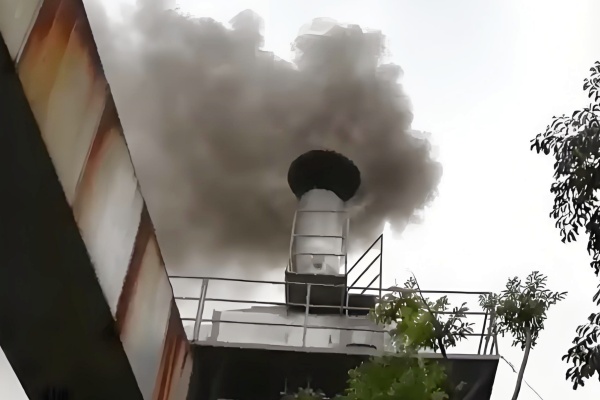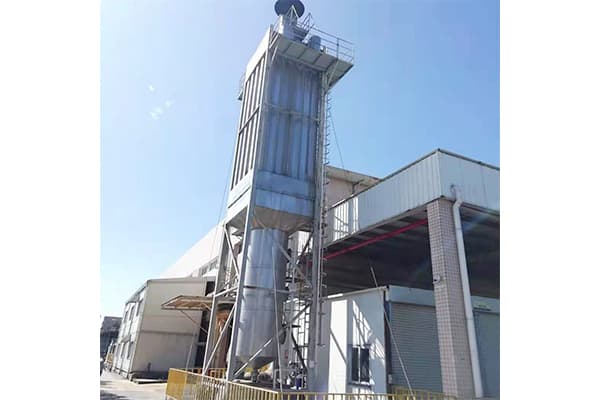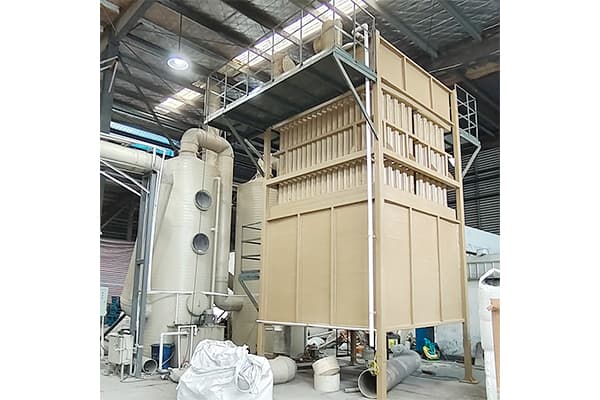What is the purification principle of wet electrostatic precipitator
The fundamental operating mechanism of the wet electrostatic precipitator(WESP)hinges on the combined action of electric field forces and liquid media to effectively capture and eliminate fine particulate matter from flue gas emissions.To elucidate its functionality,it is essential to deconstruct its internal architecture and examine its core operational components.
The initial phase of the WESP's operation involves the intake of flue gas.Contaminated flue gas is channeled into the system via a conduit,carrying a mixture of pollutants such as particulate matter and aerosols.To achieve optimal dust removal efficiency,the velocity and flow rate of the incoming flue gas must be meticulously controlled to prevent particles from escaping the device before they can be captured due to excessive flow.
Upon entering the system,the flue gas undergoes a crucial charging process.Within the precipitator,a high-voltage electric field is established by a discharge electrode and a collection electrode.Under the influence of high-voltage direct current,the discharge electrode ionizes the surrounding air,generating a substantial number of positive and negative ions.As the flue gas traverses this region,the particles within it collide with these ions and acquire an electric charge.This charging of particles,whether positive or negative,is fundamental to their subsequent capture.
Once charged,these particles are propelled toward the collection electrode by the electric field force,which is the central link in the dust removal process.The strong electric field force between the collection and discharge electrodes acts like an invisible force,rapidly drawing the charged particles toward the collection electrode.The strength and stability of this electric field are critical factors that directly influence the migration speed and capture efficiency of the particles.A stable electric field is essential for ensuring that a large number of particles are efficiently adsorbed onto the surface of the collection electrode.
After the particles are adsorbed onto the collection electrode,they are not permanently retained.Instead,they are removed through a specialized cleaning process.Unlike dry electrostatic precipitators,WESPs utilize a liquid medium,typically water,to wash the surface of the collection electrode.Over time,a layer of dirt,composed of particles and water droplets,accumulates on the electrode.This layer is removed through a spray system or other liquid flushing mechanisms,restoring the electrode to a clean state and enabling it to continue capturing new particles.
The resulting wastewater,laden with captured pollutants,is discharged through a collection system within the equipment.This wastewater cannot be released directly into the environment due to its high pollutant content.It must be connected to a specialized wastewater treatment system,where processes such as sedimentation,filtration,and purification are employed to separate particulate matter and harmful substances from the water.This ensures that the treated water meets environmental discharge standards and prevents secondary pollution.
Throughout the entire dust removal process,the integrity of the equipment's sealing and its corrosion resistance are of utmost importance.The presence of a high-voltage electric field and a humid environment within the device means that any leakage can compromise dust removal efficiency and pose safety hazards.Additionally,the corrosive nature of water and pollutants necessitates the use of corrosion-resistant materials or the application of anti-corrosion coatings to the interior of the equipment,ensuring long-term stable operation.
By integrating a series of closely interconnected key steps,including flue gas intake,particle charging,electric field adsorption,liquid cleaning,wastewater treatment,and equipment protection,the WESP forms a comprehensive and highly efficient dust removal system.Each of these steps is vital,working together to ensure that the device can continuously and reliably remove pollutants from flue gas during industrial operations,thereby contributing to the achievement of clean emission goals.
 How Wet Electrostatic Precipit
How Wet Electrostatic Precipit
 Wet Electrostatic Precipitato
Wet Electrostatic Precipitato
 Effective Purification of Dryi
Effective Purification of Dryi
 Effective Treatment of Metal
Effective Treatment of Metal


